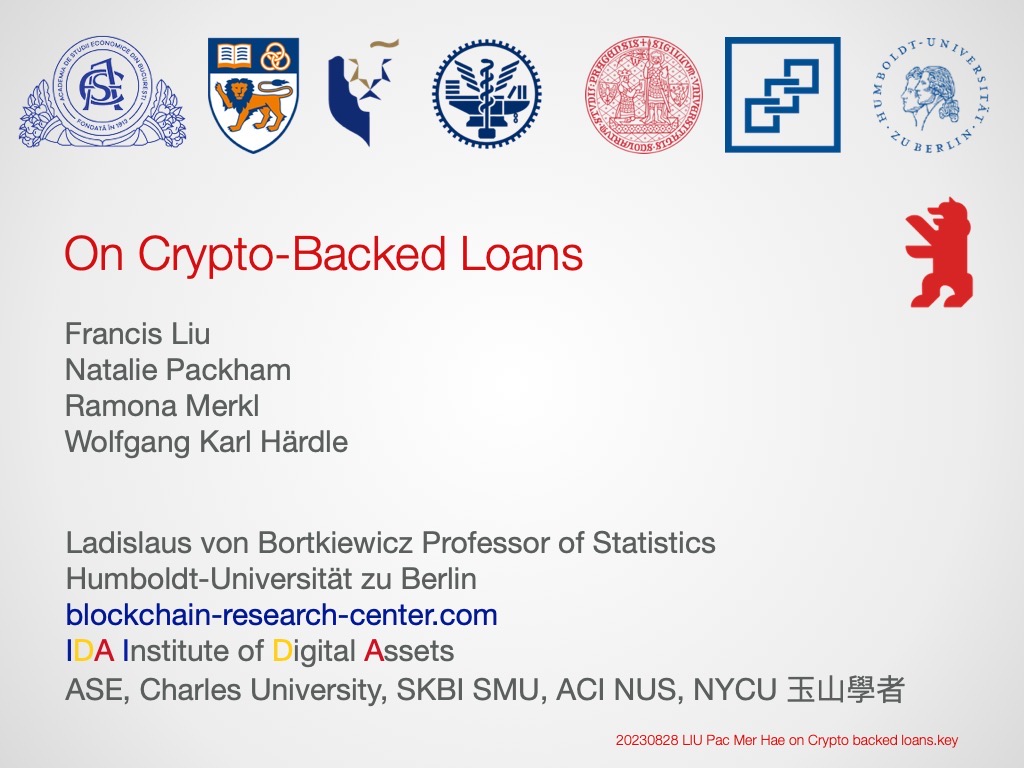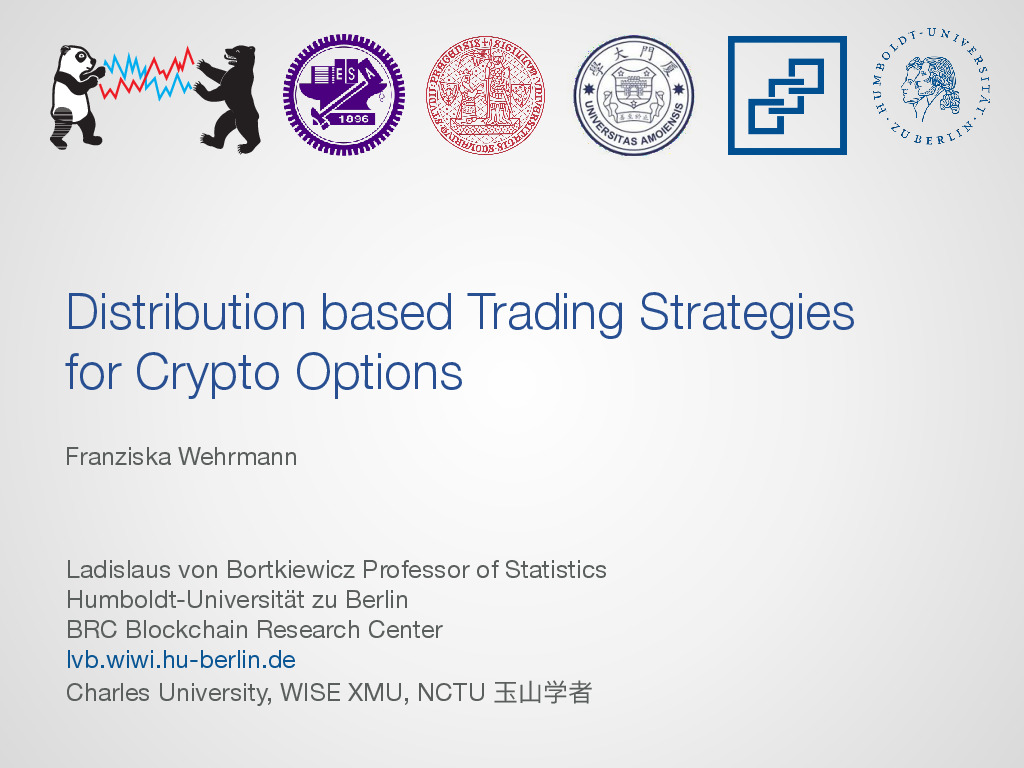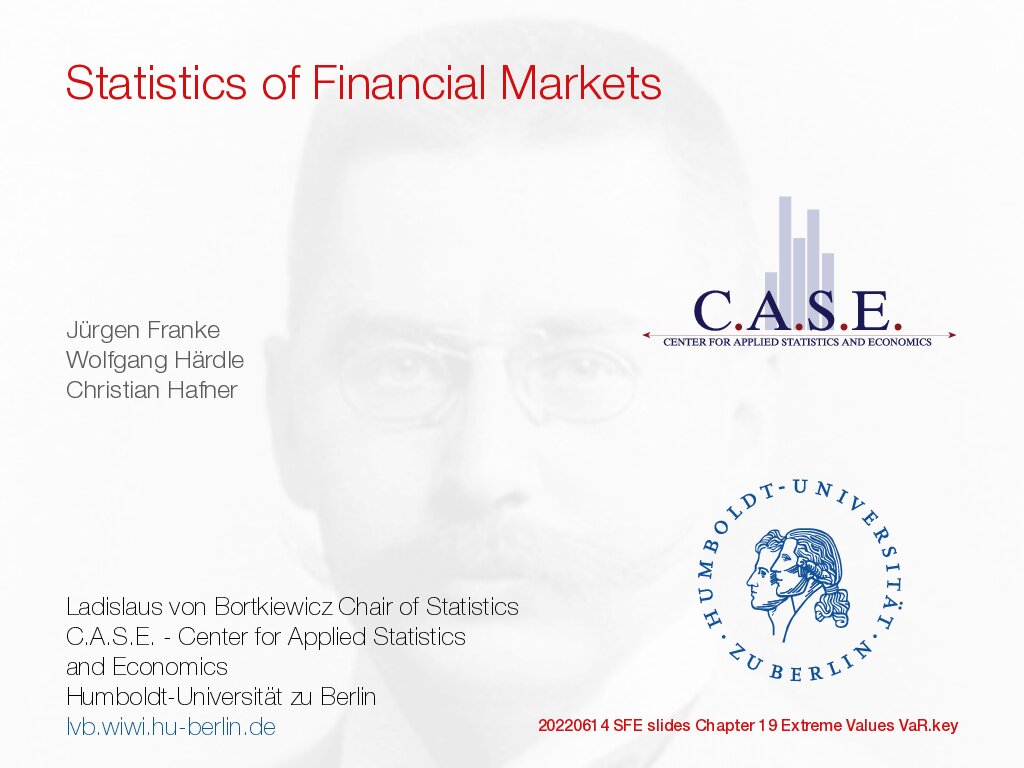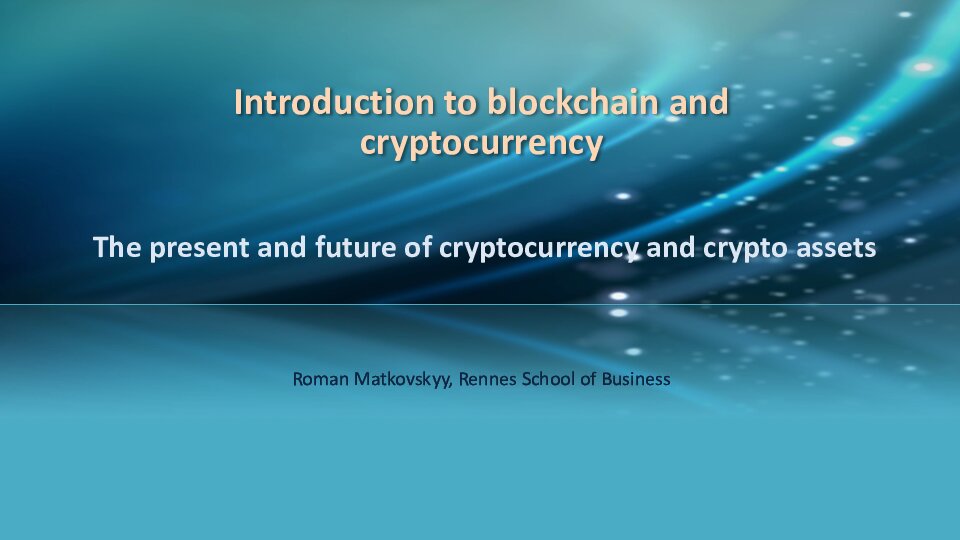On Crypto-backed Loans
-
- 5 Rating
- 2 Reviews
- 15 Students Enrolled
On Crypto-backed Loans
This paper introduces a mathematical model for the currently popular decentralised finance product, namely crypto-backed peer-to-peer lending (CP2P). The model provides a potential justification of the positive interest rate premium charged by lenders from overly-collateralised loans.
-
- 5 Rating
- 2 Reviews
- 15 Students Enrolled
Requirements
- Basic understanding of no-arbitrage pricing.
General Overview
Description
Abstract
This paper introduces a mathematical model for the currently popular decentralised finance product, namely crypto-backed peer-to-peer lending (CP2P). The model provides a potential justification of the positive interest rate premium charged by lenders from overly-collateralised loans.
In the proposed model, the borrower’s payoff is rather exotic: a perpetual American roll down call option with exponentially growing strikes and barriers. The payoff can be seen as a variant of the extended roll-down call option documented by Carr et al. (1999). From a borrower’s perspective, quantitative analysis is carried out to investigate the relationship among the fair value of the loan (a term from the stock loans literature, see e.g. Xia and Zhou (2007), Cai and Sun (2014), Dai and Xu (2011) Etc.), variables in the loan terms, and the characteristics of the underlying price process.
Cai, N., & Sun, L. (2014). Valuation of stock loans with jump risk. Journal of Economic Dynamic and Control, 40, 213-241.
Carr, P., Ellis, K., & Gupta, V. (1999). Static hedging of exotic options. In Quantitative Analysis In Financial Markets: Collected Papers of the New York University Mathematical Finance Seminar (pp. 152-176).
Dai, M., & Xu, Z. Q. (2011). Optimal redeeming strategy of stock loans with finite maturity. Mathematical Finance: An International Journal of Mathematics, Statistics and Financial Economics, 21(4), 775-793.
Xia, J., & Zhou, X. Y. (2007). Stock loans. Mathematical Finance, 17(2), 307-317.
======================================================================
The development of distributed ledger technology renovates the form of lending and borrowing: borrowers and lenders can now transact without traditional intermediaries e.g. banks. Instead, the whole borrow process is performed and governed by pre-agreed, immutable protocols and applications deployed on blockchains. Financial services on blockchains, known as decentralised finance, are different from their traditional counterparts due to their anonymous and decentralised nature. One major difference is that every aspect in decentralised finance must be monetarily incentivised; CP2P is no exception. In fact, popular CP2P protocols, e.g. Compound, AAVE and dYdX, are built upon balancing the incentives of the parties involved. As of 15th of March 2022, the total value locked as collateral in the CP2P market is worth 73 billion USD (data from https://www.defipulse.com/).
Lenders’ incentive to supply liquidity is relatively straightforward: earning interest payment from overly-collateralised loans. In CP2P, collateral is always applied to financially bind borrowers to repay. Since collaterals are in volatile cryptocurrencies, CP2P protocols usually require borrowers to pledge collateral that is worth more than the borrowings, i.e. over-collateralising the loan. Over-collateralisation does not only take place at the inception of the loan; it is enforced throughout the whole loan period. Popular protocols have mechanisms to check the loan-to-value ratio (LTV) periodically. If the LTV is larger than a pre-defined threshold, protocols turn part of the borrower’s debt available for liquidation.
Liquidators are individuals who repay unhealthy debts and receive collateral. Anyone can be liquidators. Liquidators are incentivised by the liquidation bonus, the extra amount of collateral received during the liquidation, pre-agreed by borrowers.
The CP2P loan terms seem harsh to borrowers especially the over-collateralisation requirement, but borrowers are not totally at a disadvantage. Contrarily, CP2P helps borrowers to achieve a range of objectives. First, borrowers receive liquidity in preferred cryptocurrencies without selling their crypto assets which might trigger tax events or price slippage. Second, borrowers can hedge against market downturn. If the collateral coin price goes down, borrowers may forfeit the collateral instead of repaying the loan, i.e. default. If the price goes up, the borrowers may repay the loan and the accrued interest to regain control of the collateral, i.e. unwind the position. The capped downside and unlimited upside payoff structure makes borrowers’ action contingent to price movements. In addition to hedging, borrowers can leverage their position by chaining up CP2P contracts by repeatedly exchanging the borrowed funds into collateral in the market and borrowing more from the CP2P market. We observe this behaviour from the data we collect from the Ethereum blockchain.
We study borrowers’ payoff by considering a simple economy, where a borrower possesses one unit of collateral and chains up CP2P contracts. The resulting payoff is exotic: perpetual American roll down call option with exponentially growing strikes and barriers. The payoff can be seen as a variant of the Extended roll-down call option documented in Carr et al. (1999). Other than chaining up contracts by themselves, borrowers may leverage their position using services provided by companies. The “Turbocharge Loans” service provided by company Youhodler can be seen as a securitised version of the CP2P. We delay the complex and lengthy payoff formulas to the upcoming poster.
The formulation of CP2P payoffs leads us to ask various questions, e.g. what is the current fair value of the contingent claim? How does the price process affect the fair value? Is the current loan parameters reasonable to all parties? Jumps in the crypto price process is particularly in our interest because jumps events are not rare in the crypto world and proven to be significantly impactful on credit products (Chen and Kou, 2009). Given the complexity of the payoff functions and price process, we answer these questions by adapting advanced Monte-Carlo methods, see Glasserman (2004), to double-exponential-jump-diffusion (Kou, 2002).
Reference
Cai, N., & Sun, L. (2014). Valuation of stock loans with jump risk. Journal of Economic Dynamic and Control, 40, 213-241.
Carr, P., Ellis, K., & Gupta, V. (1999). Static hedging of exotic options. In Quantitative Analysis In Financial Markets: Collected Papers of the New York University Mathematical Finance Seminar (pp. 152-176).
Chen, N., & Kou, S. G. (2009). Credit spreads, optimal capital structure, and implied volatility with endogenous default and jump risk. Mathematical Finance: An International Journal of Mathematics, Statistics and Financial Economics, 19(3), 343-378.
Dai, M., & Xu, Z. Q. (2011). Optimal redeeming strategy of stock loans with finite maturity. Mathematical Finance: An International Journal of Mathematics, Statistics and Financial Economics, 21(4), 775-793.
Glasserman, P. (2004). Monte Carlo methods in financial engineering. New York: springer.
Xia, J., & Zhou, X. Y. (2007). Stock loans. Mathematical Finance, 17(2), 307-317.
Kou, S. G. (2002). A Jump Diffusion Model for Option Pricing, Management Science 48, 1086–1101.
Courses that include this CL
Recommended for you
Meet the instructors !
Research Interest:
- Robust hedging and trading methods
- Cryptocurrency derivatives
- Quantitative finance
Work in Progress
- Hedging Cryptos with Bitcoin Futures
- Crypto-backed Peer-to-Peer Lending
- On dynamics of CP2P Interest Rate














